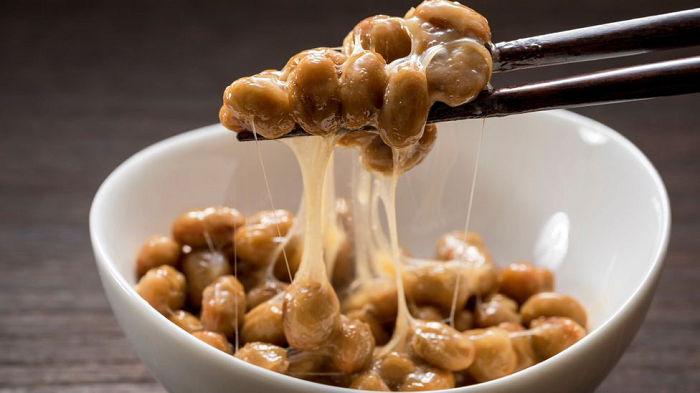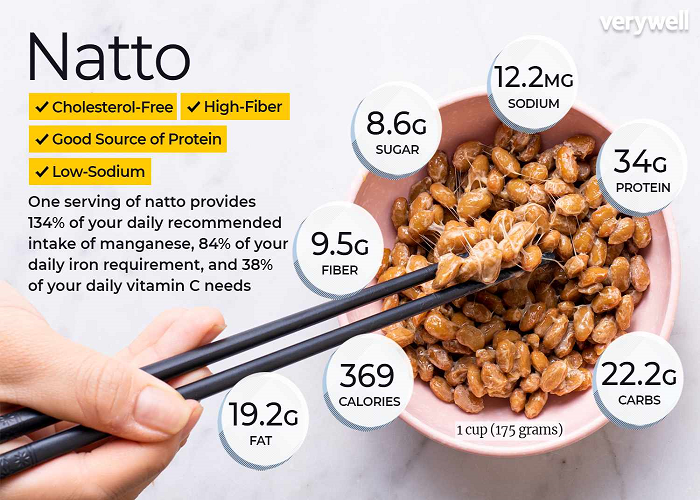Slimy generally isn’t an appealing feature when talking about food but, in the case of the natto that we’re discussing, it’s major element of its appeal. In actual fact, “slimy” is one of the most attractive descriptors and is followed by gluey muclaginous, stringy and that’s not even getting to start to think about the taste.
What Is Natto?
You either love it or hate it; there is no middle ground in this food that is polarizing. Soybeans that have been fermented are an integral part of Japanese cuisine for a number of years. They were an option for preservation and adding nutrition from in the Yayoi the period (300 BCE – 300 CE.) It was a staple in Shojin-ryori which provided meat-free food for Buddhist monks and even feeding samurai on their way to combat.

Natto is made with just two components: whole cooked soybeans as well as Bacillus subtilis culture. It has many similarities with soy sauce and miso but is much quicker in that it takes about 24 hours or less to maturate.
Natto Nutrition
Although it’s an acquired taste for a lot of people, natto remains as a superfood that is powerful. Some companies have gone as that they have made it into a powder to create a capsule it for people who don’t want to go through the whole taste. But nothing can be as good as the real thing which contains more manganese, iron, copper and fiber than a comparable quantity of meat. We should not forget to mention all the cholesterol-free plant proteins and more probiotics than your average yogurt cup. Studies have proven that it can aid in boosting bone density, reduce blood pressure and assist in digestion, to name a few.
The real reason for Natto’s the world of nutrition has to do with Nattokinase is an enzyme specific to fermented beans that numerous studies have proven to be effective in fighting heart disease. It’s also high in Vitamin K2 which is essential to bone and skin health metabolism, brain function. However, it isn’t easy to locate in other sources, such as plant-based.
What Does Natto Taste Like?
Natto isn’t for all. Recent polls show that even self-described lovers of the product are divided about their personal satisfaction with it, while acknowledging that it’s a routine portion of their diet due to its health benefits, but not the taste.
They are rich, earthy and soft. After fermentation they develop a distinctive flavor, reminiscent of Brie cheese. It can also vary in its intensity. It’s a rich, salty umami and sometimes has some bitterness. Natto that is prepared is spiced with dashi, which gives it a fishy smell.

Neba-Neba is a Japanese word that refers to its distinct texture, which is flexible, slimy, and sticky. This texture is amplified when stirred, as it absorbs air and makes the natto thicker.
Buying Or Making Natto
Usually sold in 3-packs, Natto that is ready to eat can be typically found in Asian specialty stores in the freezer section next to the edamame and vegetables, and in the chilled food section, which is located near Miso pastes. It is important to read the labels attentively, since they may contain non-vegan ingredients such as fish in a variety of varieties. These could be listed on the label such as:
- Bonito
- Dashi
- Tuna
- Tuna extract
- Dry fish
- Fish sauce
It is possible to avoid all these potential pitfalls with a homemade natto in your kitchen. If you’ve ever prepared sauerkraut, kimchi, or yogurt, then you’re able to make Natto! The trick is to buy the proper culture and let it go at its own pace.
Natto Serving Suggestions
Controlling the texture and identifying an appropriate flavor combination is the most important thing to do when you want to enjoy Natto’s unique flavor and texture. There’s nothing similar to it so the best way to get it is to test the taste for yourself!
They are rich, earthy and soft. After fermentation they develop a distinctive flavor, reminiscent of Brie cheese. It can also vary in its intensity. It’s a rich, salty umami and sometimes has some bitterness. Natto that is prepared is spiced with dashi, which gives it a fishy smell.
Neba-Neba is a Japanese word that refers to its distinct texture, which is flexible, slimy, and sticky. This texture is amplified when stirred, as it absorbs air and makes the natto thicker.
Buying Or Making Natto
Usually sold in 3-packs, Natto that is ready to eat can be typically found in Asian specialty stores in the freezer section next to the edamame and vegetables, and in the chilled food section, which is located near Miso pastes. It is important to read the labels attentively, since they may contain non-vegan ingredients such as fish in a variety of varieties. These could be listed on the label such as:

- Bonito
- Dashi
- Tuna
- Tuna extract
- Dry fish
- Fish sauce
It is possible to avoid all these potential pitfalls with a homemade natto in your kitchen. If you’ve ever prepared sauerkraut, kimchi, or yogurt, then you’re able to make Natto! The trick is to buy the proper culture and let it go at its own pace.
Natto Serving Suggestions
Controlling the texture and identifying an appropriate flavor combination is the most important thing to do when you want to enjoy Natto’s unique flavor and texture. There’s nothing similar to it so the best way to get it is to test the taste for yourself!
